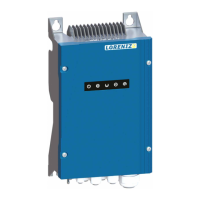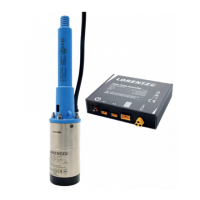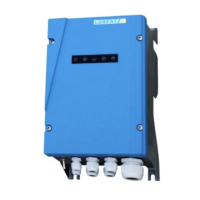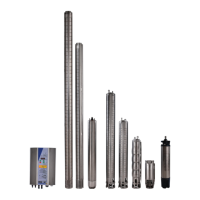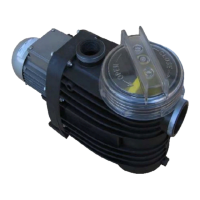Electrical Testing Illustrated9
These tests are extremely helpful when trying to assess the
performance of a system, or locate a fault. These proce-
dures will help you to fill out the Problem Report.
Obtaining and using a multimeter Refer to section
13.7, and to your meter’s instruction manual. Measuring
current (amps) is easiest if you have a clamp-on ammeter,
as shown in photos 2A, 4A and 6A.
Probe input Some meters give a choice of probe sockets.
The negative (black) probe ALWAYS goes in the “COM”
(common) socket. The + (red) probe input varies, and is
specified below.
Range If your meter is “auto-ranging”, this does not apply.
Otherwise, use the range than the reading you expect. For
example, in Test #1, “normal” voltage is around 80. The
proper range may be 100 V or 200 V, depending on your
meter design.
Access Open the junction box for access to the terminals.
The appearance of your wiring may vary.
WARNING These tests pose
potential shock and burn hazards.
Follow appropriate safety precau-
tions.
WARNING To measure voltage, put
the + probe in the VOLTS socket on
the meter. If it is in an AMPS socket,
attempting a voltage reading will
cause a short circuit and potential
damage.
Is the solar array receiving shadow-free light? (It 1.
only takes a small shadow to stop it.) Is it oriented
properly toward the south, and tilted at the proper
angle? See sections 4.4 and 4.5
Be sure you have the right pump for the total lift 2.
that is required, out of the well + up the hill. In the
case of a pressurizing system, the pressure head is
equivalent to additional lift (1 PSI = 2.31 feet, 1 bar
= 10 m).
Be sure all wire and pipe runs are sized adequately 3.
for the distance. Refer to wire sizing in the pump siz-
ing table, and to the pipe sizing chart in this manual,
see section 13.3
Inspect and test the solar array circuit and the con-4.
troller output, as above. Write down your measure-
ments.
There may be a leak in the pipe from the pump. Open 5.
a pipe connection and observe the water level. Look
again later to see if it has leaked down. There should
be little or no leakage over a period of hours.
Measure the pump current and compare it with the 6.
table in the previous section, cf. Test #6
There is a “max. RPM” adjustment in the controller. 7.
It may have been set to reduce the flow as low as
50 %. See section 5.6
Has the flow decreased over time?
Is the AC motor current lower than normal? The 1.
pump end (pumping mechanism) may be worn from
too much abrasive particles (sand or clay) in the
water.
Is the AC motor current higher than normal? Doesn’t 2.
start easily in low light? This is likely to be related to
dirt in the pump and/or pipe.
Look in the water tank or pipes to see if sediment 3.
has been accumulating.
Run the pump in a bucket to observe.4.
Remove the pipe from the pump outlet (check valve) 5.
and see if sand or silt is blocking the flow.
If the check valve itself is clogged with dirt, see CAU-6.
TION, section 9.1
To help prevent dirt problems, see section 6.7, Cop-7.
ing With Dirty Water Conditions.
After years of use, it may be necessary to replace the 8.
pump end. Call your pumps supplier for advice.
If The Pump Runs But Flow Is Less Than Normal8.4

